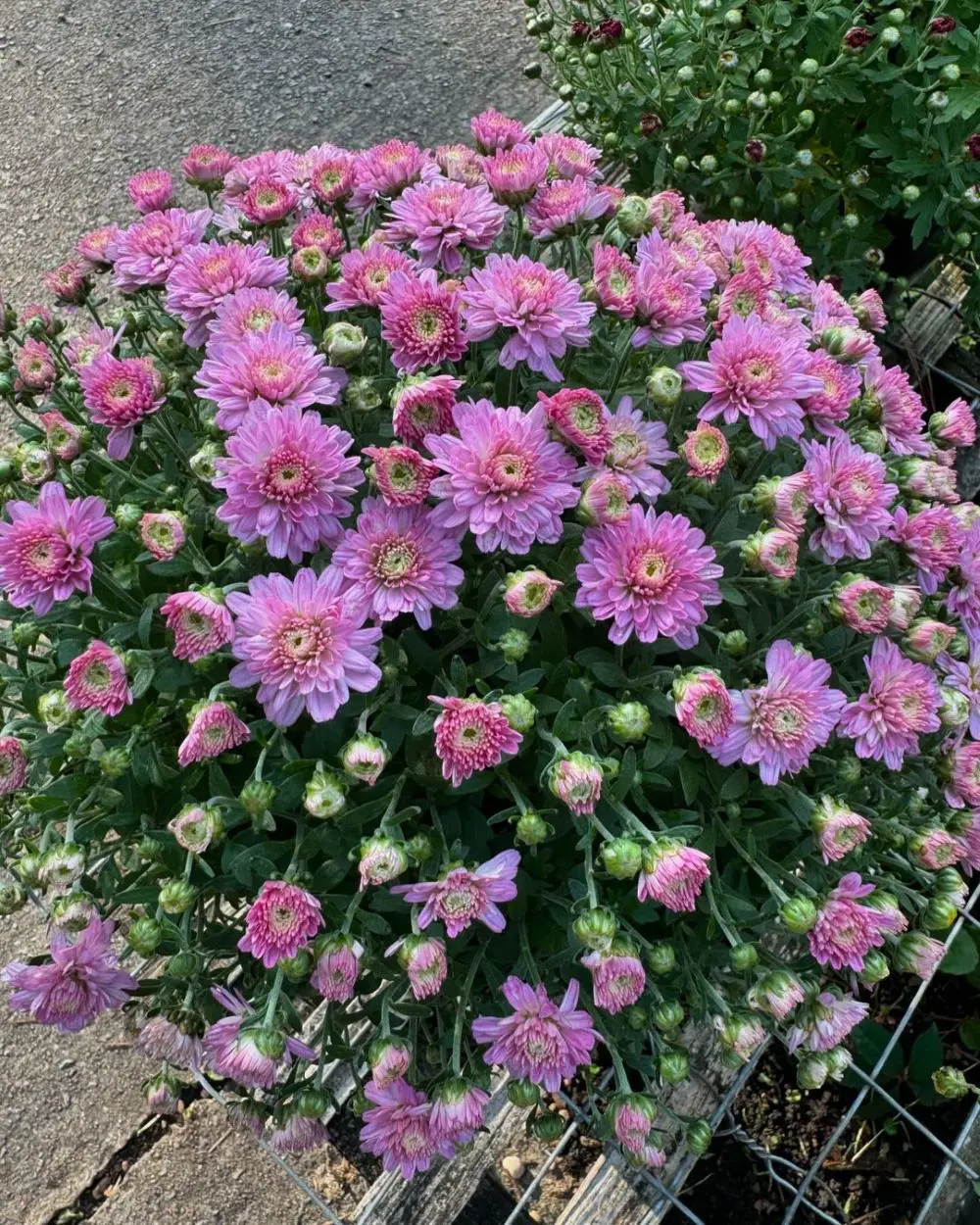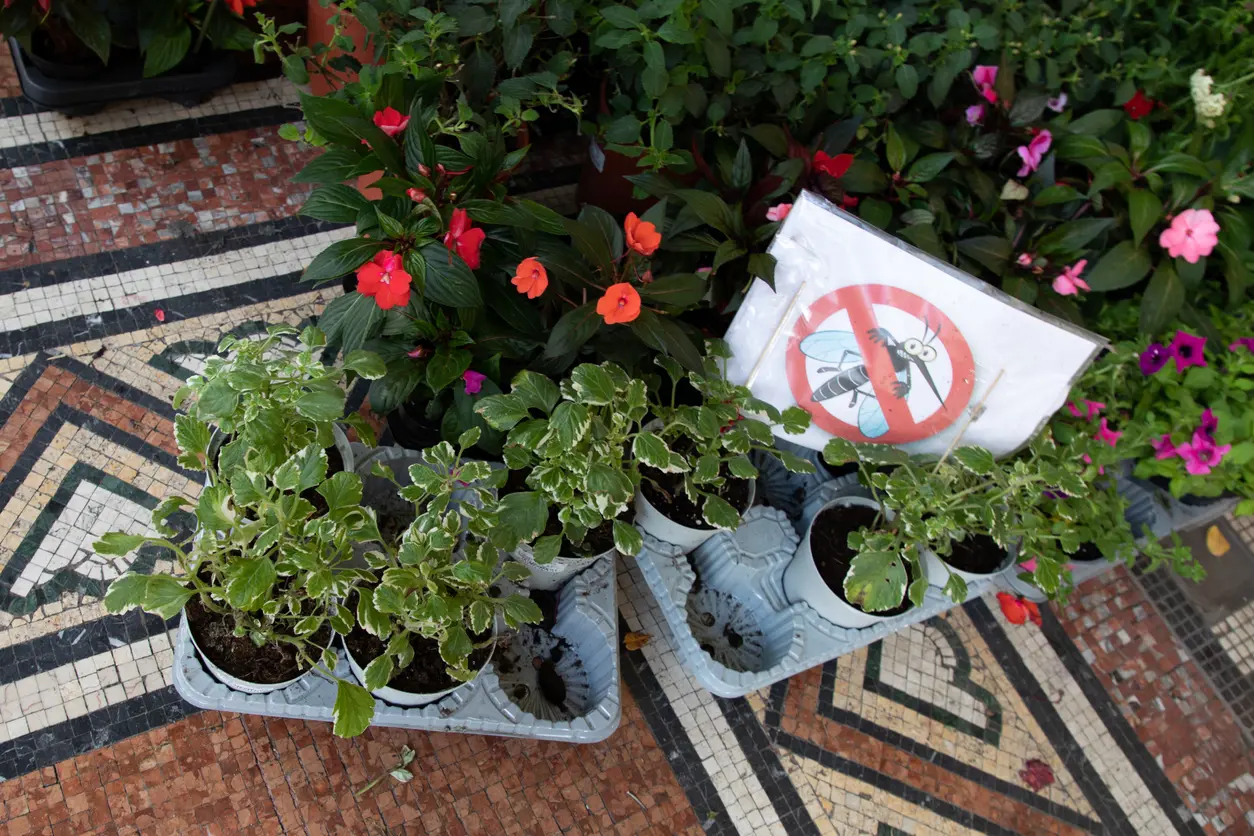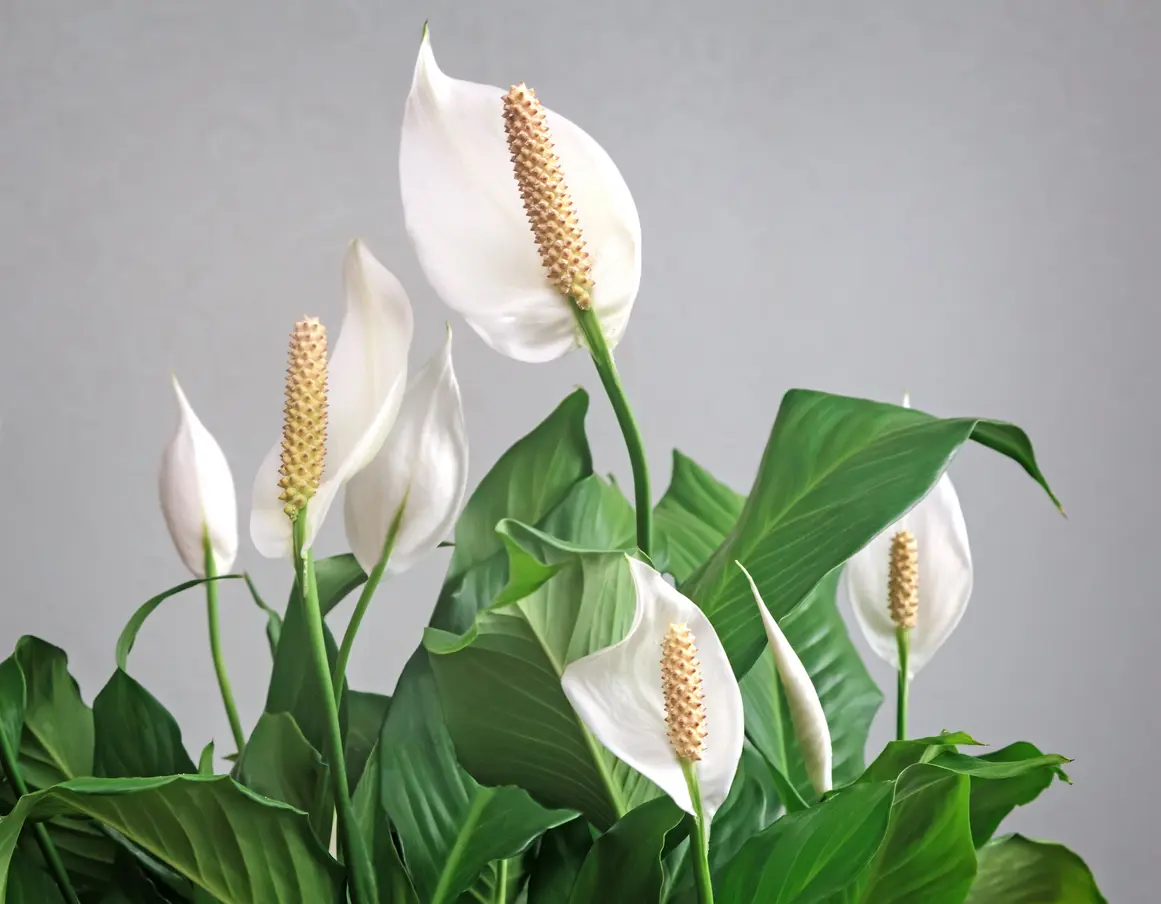
Lucky bamboo care involves providing the right conditions for this popular houseplant, believed to bring good luck and prosperity.
Despite its name, lucky bamboo is not actually a bamboo but a type of Dracaena plant. It is an easy-to-care-for plant that can be grown in soil or water and prefers moderate to indirect sunlight.
This versatile plant can be grown both indoors and outdoors, making it an excellent choice for busy individuals seeking to incorporate greenery into their homes or offices. With dedicated care, lucky bamboo can thrive, enhancing your space with positivity and fortune.
Lucky Bamboo Overview
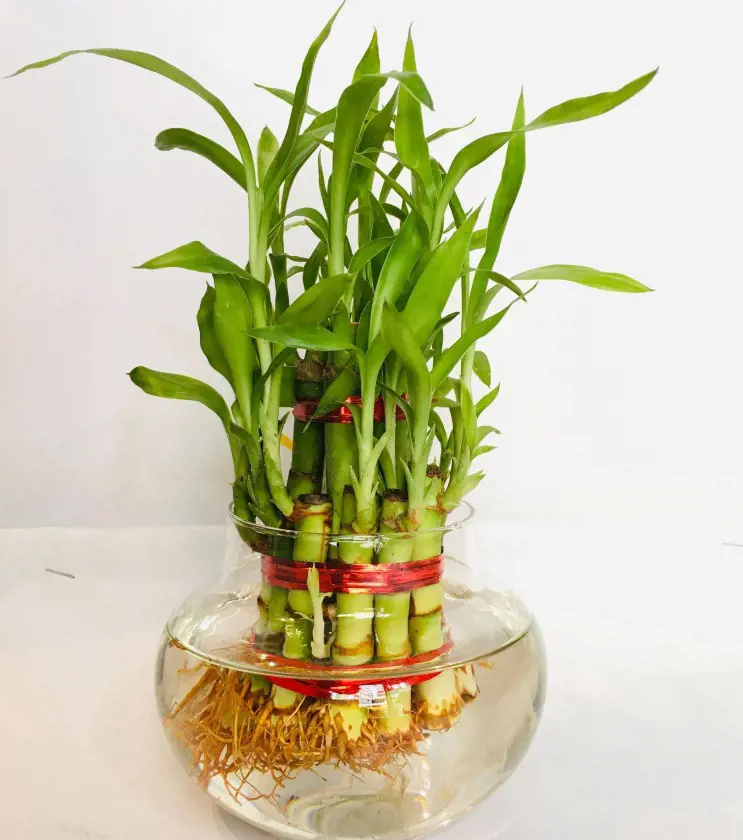
Lucky bamboo is typically grown in water and placed in indirect light, making it a suitable plant for various indoor and outdoor spaces. Being a low-maintenance plant, it is perfect for both offices and homes alike. It is not cold-hardy and thrives in warm conditions.
Apart from that, lucky bamboo is a versatile and auspicious plant that many people believe brings natural beauty and positive energy. According to Feng Shui principles, placing this plant on the east or southeast side of the interiors can attract wealth and positive energy.
Common Name: Lucky bamboo, ribbon plant, and friendship bamboo
Botanical Name: Dracaena sanderiana
Family: Asparagaceae
Plant Type: Perennial shrub
Sun Exposure: Partial shade
Soil Type: Well-drained, Moist
Soil pH: Acidic
Hardiness Zones: 10 – 11 (USDA)
Height: 1 to 5 feet tall
Native Country: Africa
Lucky Bamboo Care Tips
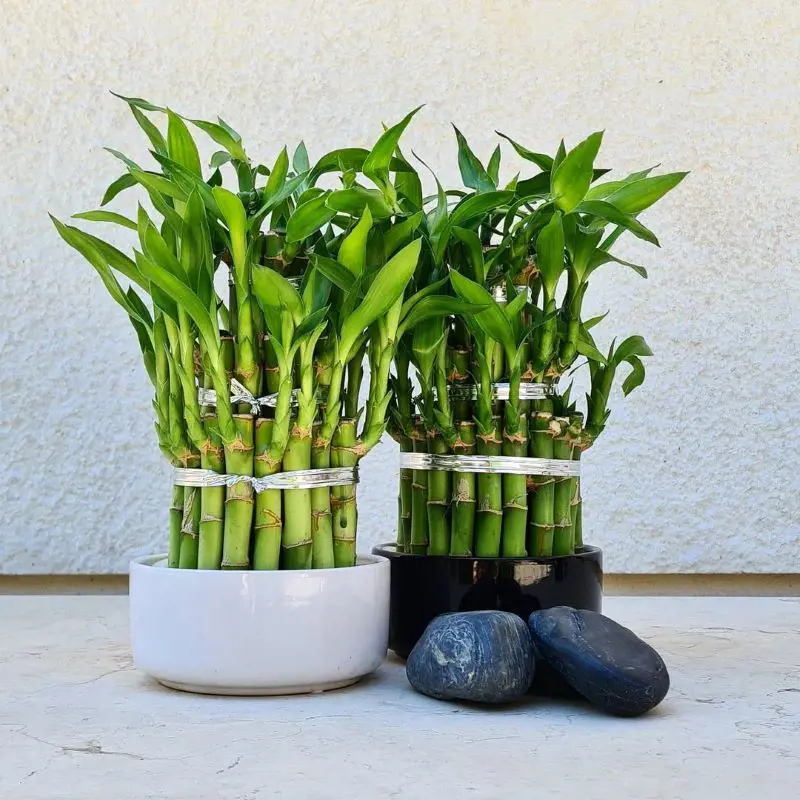
It's actually simple to learn how to care for lucky bamboo. This resilient plant grows in both water and soil, with a preference for soil to promote longevity. We have included in-depth information for growing and caring for this plant. Here is a quick step-by-step guide for caring for this plant.
- Place your lucky bamboo in indirect sunlight.
- If you have grown in water, change the water every two to four weeks.
- Only use filtered or distilled water.
- Use a clean, sharp pair of scissors to trim the plant's stems and yellow leaves.
- Avoid direct sunlight and chlorine in the water.
- Maintain a temperature range of 65 to 95°F.
- Repot the plant as its roots outgrow the container.
Sunlight
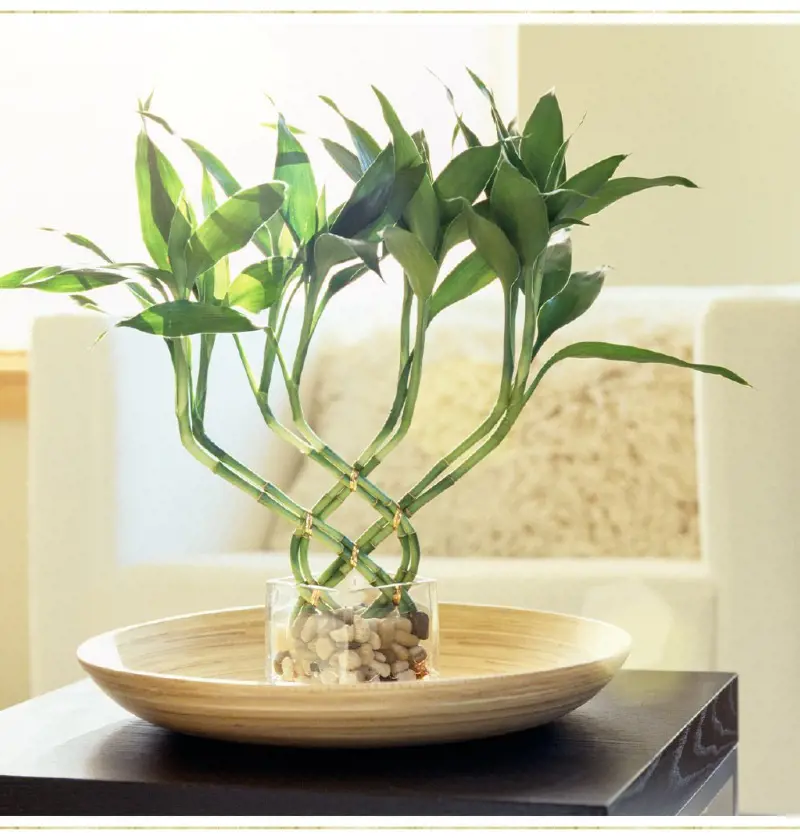
Lucky Bamboo Indoor
Indoor lucky bamboo prefers moderate to indirect sunlight, so you should avoid placing them in direct sun exposure as it can scorch their delicate leaves. Instead, it's ideal to position them in front of a bright window. Additionally, there are different varieties of this plant, and their light requirements may vary. To promote even growth, consider rotating these plants regularly.
Lucky Bamboo Outdoor
Outdoor bamboo thrives in partial shade and benefits from being shielded from direct sunlight, especially during the hottest part of the day. Exposure to extreme sun can lead to the edges of the leaves developing a brown tinge, resembling burns. Therefore, it is advisable to place them outside during the summer and move them indoors before the arrival of frost.
Soil
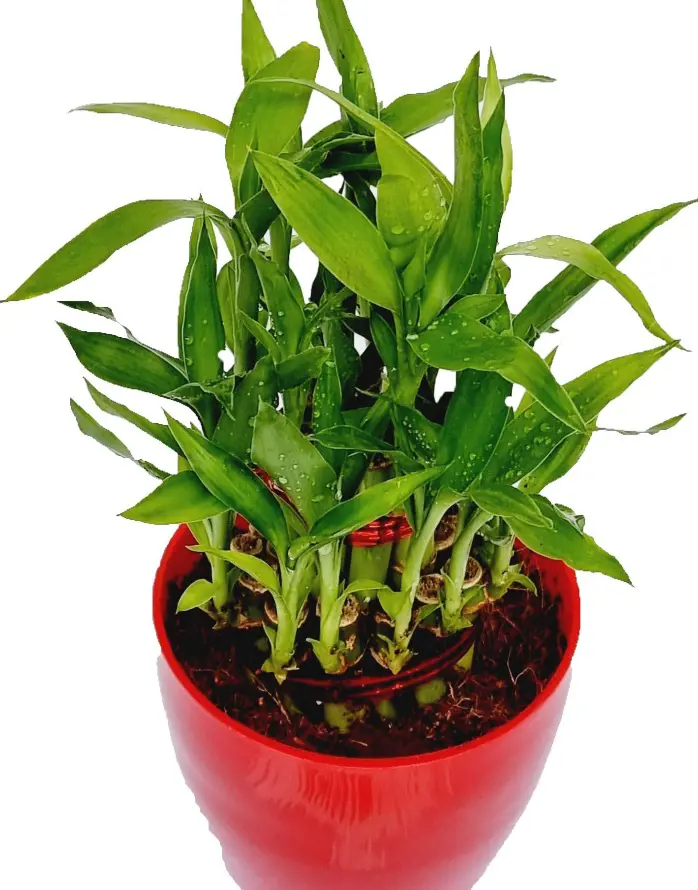
Indoor Lucky Bamboo
Indoor lucky bamboo is typically grown in water rather than in soil. In its natural habitat, it grows in the understory of tropical rainforests, with its roots submerged in water and soil. When grown as a houseplant, it is commonly placed in containers filled with water or other growing mediums, such as pebbles or decorative stones.
Outdoor Lucky Bamboo
Outdoor lucky bamboo does not need overly rich soil; a potting mix with some organic matter will provide essential nutrients for healthy growth. Look for mixes containing composted manure, leaf mold, or coconut coir. Like most plants, this bamboo also dislikes soggy roots, so choose a well-draining potting mix specifically formulated for outdoor container plants.
Temperature And Humidity

Temperature For Indoor Lucky Bamboo
Place your indoor bamboo, maintaining a warm temperature ranging from 65-95°F and moderate to high humidity levels. Keep them away from cold drafts and air conditioning units, as exposure to these cooler conditions may lead to stress and damage to your plant. Mist the leaves regularly or use a humidifier in dry climates to maintain the required humidity levels. This will help prevent the leaves from drying out and keep the plant healthy.
Temperature For Outdoor Lucky Bamboo
When growing lucky bamboo outdoors, it's important to provide dappled shade and occasionally mist the leaves to maintain humidity. The plant can tolerate temperatures down to 10°C, but anything colder than that can damage its leaves. Additionally, it should be protected from harsh winds and full sun. Aim for 50% or higher humidity, especially during hot summers.
Fertlizer

Indoor Lucky Bamboo
Lucky bamboo grown indoors or in water does not require much fertilizer, as its roots have limited access to nutrients. In fact, over-fertilization can harm them, leading to leaf yellowing or burning. If you choose to apply fertilizer, use a half-strength liquid fertilizer formulated for this plant every 2 to 3 months. Do not feed them during the colder months of winter.
Outdoor Lucky Bamboo
Lucky bamboo planted outdoors or in soil has greater access to nutrients and benefits from regular fertilization, especially during active growth periods. Feed them once a month with a balanced liquid fertilizer suitable for foliage plants during spring and summer. In the fall, reduce fertilization to once every two months, and stop altogether in winter. Apply the diluted fertilizer directly to the soil around the base of the plant.
Pests And Problems
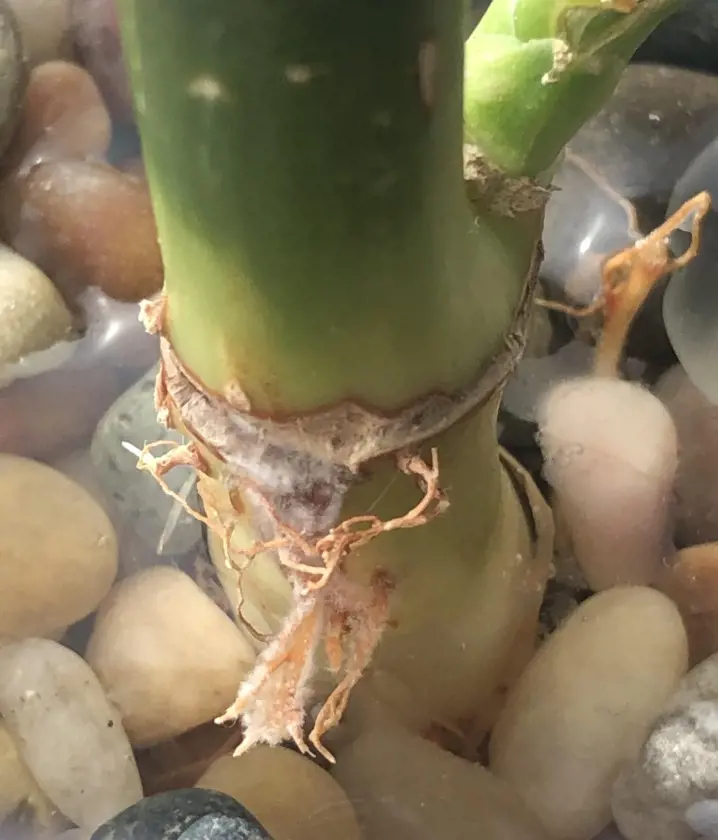
Indoor
Indoor lucky bamboo is prone to common pests such as spider mites, aphids, and mealybugs, which feed on plant sap. This can lead to stunted growth and yellowing of leaves, especially during the warmer months. To control these pests, regularly wipe the leaves with a damp cloth and use insecticidal soap and neem oil.
Outdoor
Outdoor lucky bamboo, when grown in its natural habitat, may be vulnerable to pests such as snails, slugs, and caterpillars, causing visible damage to the leaves and stems. These outdoor pests are most active during the spring and summer months. To manage these pests effectively, you can employ strategies like creating barriers, handpicking, or using organic bait.
Repotting
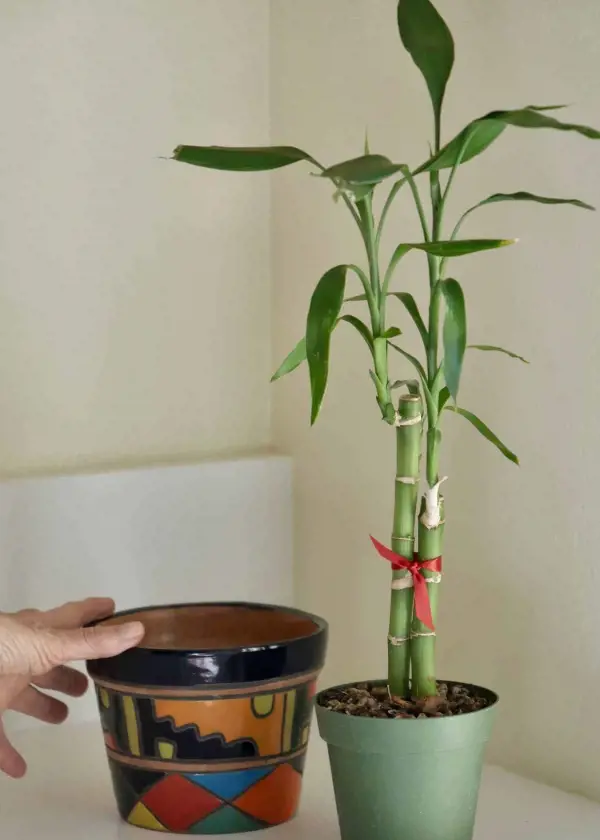
Once your lucky bamboo starts showing signs like roots poking out, yellowing leaves, or slow growth, it's time to give it a new home. Choose a pot that's a bit bigger and fill it with fresh soil. Carefully transfer your bamboo, making sure it's snug.
Think of it as finding a comfortable space for your green buddy to thrive. Doing this every year or two ensures your lucky bamboo stays healthy and continues bringing green goodness to your space.
How To Propagate Lucky Bamboo

Lucky bamboo can be propagated throughout the year, but it is best to do so during the growing season, which extends from spring to summer. During this period, the plant is actively growing, making it easier for the cutting to develop roots.
Root formation can take anywhere from two to six weeks, depending on whether you choose to propagate it in soil or water. If you opt for soil propagation, expect the process to take longer, possibly four to six weeks.
Water Propagation
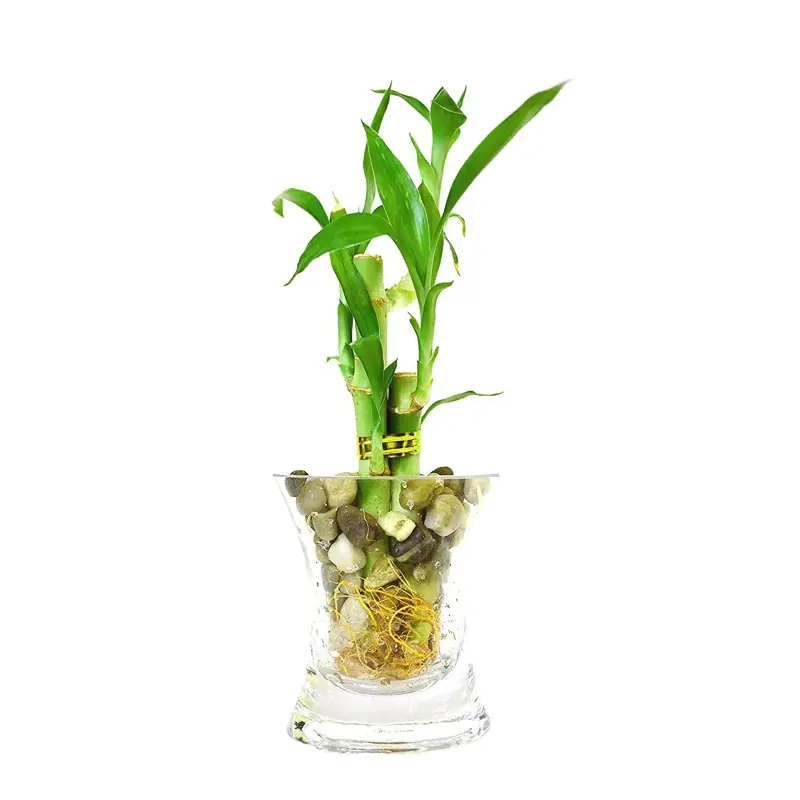
Lucky bamboo is easily propagated through water. A healthy cutting, with nodes submerged in water, develops roots over time. After sufficient root growth, the cutting can be transplanted into the soil for continued growth, making it a simple and effective propagation method.
Steps:
- Take a healthy cutting from a mature plant with offshoots.
- Place the cutting in a small glass filled with a few inches of distilled water.
- Ensure the remaining leaves are above the water line to prevent rot.
- Put the glass in bright, indirect light and refresh the water at least once a week with distilled or bottled water.
Soil Propagation

Soil propagation is a traditional method involving the growth of new plants directly in soil. Whether from seeds, cuttings, or divisions, this technique fosters root development and overall plant growth in a suitable growing medium.
- Take a single tall stalk and cut off a side shoot that is at least 5 inches tall.
- Place the cutting in a vase or glass of water with an inch of gravel to keep the stalk straight.
- After roots grow in 2 months, you can plant it in soil or continue growing it in water.
Lucky Bamboo Symbolism
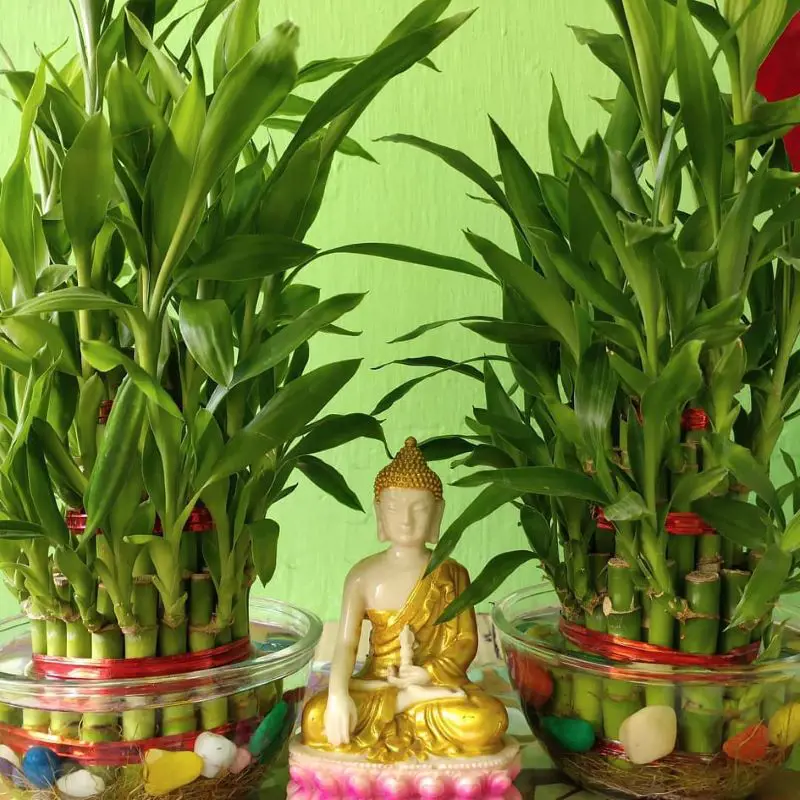
With a history dating back over 4000 years in Chinese culture, it is highly regarded for its symbolic significance, representing good fortune and positive energy in Feng Shui. The number of stalks in a lucky bamboo arrangement holds different meanings, such as love, wealth, and abundance. See the different meanings below:
1 stalk: Represents simplicity, unity, and strong purpose.
2 stalks: Represents love and relationships of all types.
3 stalks: Represents happiness, wealth, and long life.
4 stalks: Considered unlucky ( represents death).
5 stalks: Represents wealth or fortune.
6 stalks: More happiness and golden opportunities to attain wealth and money.
7 stalks: Good health and is always considered a lucky number.
8 stalks: Growth or wealth, as the number 8 is viewed as lucky in Asian culture.
9 stalks: Represents success and gratitude.






